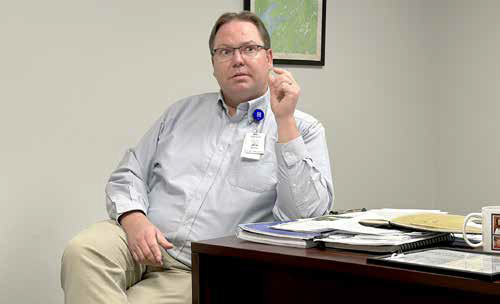Ely-Bloomenson Community Hospital has implemented a series of changes to improve safety and security on the hospital campus.
The moves range from tightening access to hospital doors and entries to various trainings to prepare for potentially disastrous situations.
John Kannas, staff educator at the hospital, described a series of initiatives earlier this week.
One involved a move to limit access to hospital doors.
“Door security is one of the big things we were working on,” said Kannas. “We’re really improving the way we lock down our facility.”
Currently, only three doors are available for public access.
“It’s really the only place people can possibly access (doors),” said Kannas. “There’s the main entrance, the emergency department and through rehabilitation.”
Both the main entrance and the rehabilitation area doors are limited by hours, with the emergency department open 24 hours per day but requiring staff to “buzz in” visitors after hours.
“All of the other doors are secured so only somebody with a badge can access through those locations,” said Kannas.
EBCH also implemented another major safety-related move, blocking off access to the parking lot used for medical helicopter takeoffs and landings.
That area is now completely closed - rather than only when the helicopters was being used - and prevents people from driving around the west side of the hospital through to the south.
“It created a safety issue when people drove through there,” said Kannas. “We had people staffed but it was hard to control and in general people tried to cut around. When we closed that off it really decreased traffic and made it a lot safer for our patients.”
EBCH has also improved the lighting in its parking lots, making it brighter with more visibility, and the hospital’s facilities team is working on removing brush and trees to improve sight lines.
Staff members also prepared for the worst - undergoing active shooter training, both online and in person.
“We walked through different scenarios and what they would do and how they would respond,” said Kannas. “It helps people think about how they would respond and what would their options be if you do have an incident like that.”
“It was a real eye opener (for staff),” said Jodi Martin, the hospital’s marketing and communications team leader.
EBCH is also reviewing evacuation plans, both in case of an incident at the facility or in case of wildfire.
“We are looking at what it would look like to evacuate here, and who are our partners,” said Kannas.
Agreements are in place to move hospital patients elsewhere and to access additional transportation, but Kannas said some of those plans have to change in case of a wildfire.
“If it’s something in our building you might use local relocation but if it’s a wildfire it may be Virginia or further away.”

John Kannas, staff educator at the hospital










